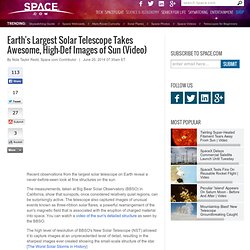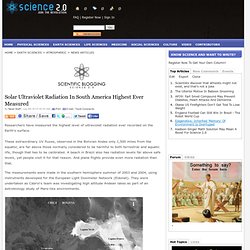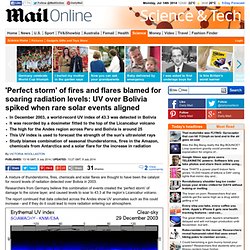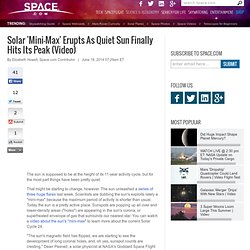

Prepare for the apocalypse in Morristown. If you’ve ever worried about how you’d fare during an alien invasion, zombie uprising, solar flare, or other apocalyptic event, look no further than Historic Speedwell in Morristown for clues on how to develop the skills you’d need to survive.

The 7.5-acre National Historic Landmark site, which preserves the restored estate of Stephen Vail, proprietor of Speedwell Iron Works from the early to mid-1800s, will be hosting its first “Apocalypse WOW: Surviving the End Times at a Historic Site” event from 2 to 4 p.m. Saturday, July 12. The program was designed to teach visitors about how working at a historic site like Historic Speedwell helps a person develop the skills they would need to survive in a world without electricity or plumbing, as well what it would be like to live without the Internet. “The main idea behind the program is that when working at a historic site, you have to think like the people who lived at your site did. Historic Speedwell, 333 Speedwell Ave. Ultraviolet Radiation Levels Highest Ever Recorded. How Many Ways Can the Sun Kill You? Best Space Pictures: Typhoons Whirl, Flares Unfurl, and Galaxies Swirl. Stargazing: Mega solar flares. "We'll show you sunspots three times bigger than the earth and solar flares thousands of kilometres long!

" Solar Flare... Typical of the size we're experiencing this month. Credit: NASA See your ad here Visitors at one of our past solar viewing events Credit: D. Locals and visitors to the Hastings are invited to come along and take part in a world wide event to celebrate safe solar viewing. The recently formed Mid North Coast Astronomy Group will be holding a special viewing session and large telescope display all day Sunday, 22 June, on Port Macquarie's Town Green, down beside the wharf area. Earth's Largest Solar Telescope Takes Awesome, High-Def Images of Sun (Video) Recent observations from the largest solar telescope on Earth reveal a never-before-seen look at fine structures on the sun.

The measurements, taken at Big Bear Solar Observatory (BBSO) in California, show that sunspots, once considered relatively quiet regions, can be surprisingly active. Solar Ultraviolet Radiation In South America Highest Ever Measured. Researchers have measured the highest level of ultraviolet radiation ever recorded on the Earth's surface.

These extraordinary UV fluxes, observed in the Bolivian Andes only 1,500 miles from the equator, are far above those normally considered to be harmful to both terrestrial and aquatic life, though that has to be calibrated. A beach in Brazil also has radiation levels far above safe levels, yet people visit it for that reason. 'Perfect storm' of fires and flares blamed for soaring radiation levels. In December 2003, a world-record UV index of 43.3 was detected in BoliviaIt was recorded by a dosimeter fitted to the top of the Licancabur volcanoThe high for the Andes region across Peru and Bolivia is around 25 This UV index is used to forecast the strength of the sun's ultraviolet raysStudy blames combination of seasonal thunderstorms, fires in the Amazon, chemicals from Antarctica and a solar flare for the increase in radiation By Victoria Woollaston Published: 13:16 GMT, 9 July 2014 | Updated: 13:27 GMT, 9 July 2014 A mixture of thunderstorms, fires, chemicals and solar flares are thought to have been the catalyst for record levels of radiation detected over Bolivia in 2003.

Researchers from Germany believe this combination of events created the ‘perfect storm’ of damage to the ozone layer, and caused levels to soar to 43.3 at the region’s Licancabur volcano. In December 2003, a record UV index of 43.3 was detected at Bolivia's Licancabur volcano. Solar 'Mini-Max' Erupts As Quiet Sun Finally Hits Its Peak (Video) The sun is supposed to be at the height of its 11-year activity cycle, but for the most part things have been pretty quiet.

That might be starting to change, however. The sun unleashed a series of three huge flares last week. Scientists are dubbing the sun's exploits lately a "mini-max" because the maximum period of activity is shorter than usual. Today the sun is a pretty active place. Sunspots are popping up all over and lower-density areas ("holes") are appearing in the sun's corona, or superheated envelope of gas that surrounds our nearest star.
"The sun's magnetic field has flipped, we are starting to see the development of long coronal holes, and, oh yes, sunspot counts are cresting," Dean Pesnell, a solar physicist at NASA's Goddard Space Flight Center, said in a statement. The sun's bizarre peak has its roots in an odd time in 2008 and 2009, when sunspot numbers were far lower than scientists expected. Danger and beauty. A Review of Sun Above the Horizon: Meteoric Rise of the Solar Industry. Clean Power Published on July 11th, 2014 | by Roy L Hales July 11th, 2014 by Roy L Hales Originally Published in the ECOreport Inside the Academy for continuing education, Herne, near Gelsenkirchen. – Sun Above the Horizon © Peter F.

Varadi. Blast! Sun Pops Off A Moderate Solar Flare. Could Others Follow Soon? Want to stay on top of all the space news?

Follow @universetoday on Twitter With a watchful NASA spacecraft capturing its moves, the Sun sent off a “mid-level” solar flare on Tuesday (July 8) that you can watch (over and over again) in the video above. The Solar Dynamics Observatory caught the explosion around 12:20 p.m. EDT (4:20 p.m. UTC), which led into a coronal mass ejection that sent a surge of solar material into space. DNA Changes - Secrets of Carbon 7. Solar Maximum - every 11 years.